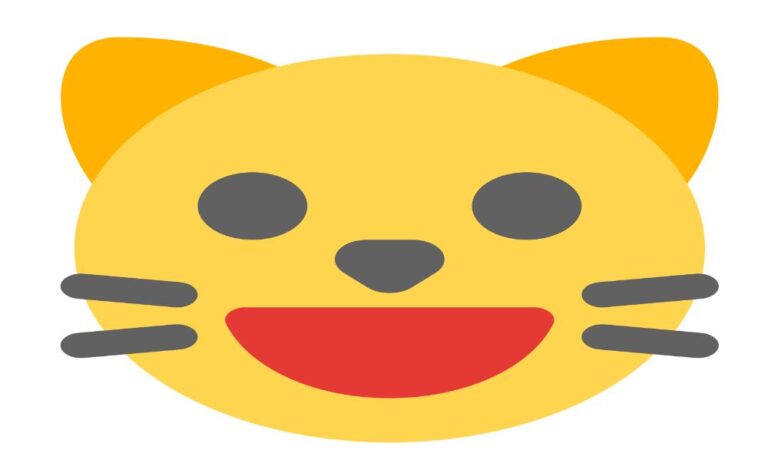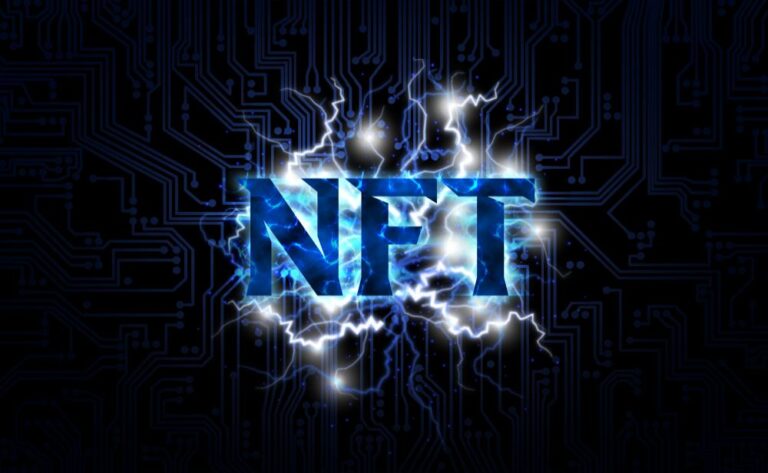
Non-fungible tokens, also known as NFTs, are becoming more widespread, and it is difficult, if not downright foolish, to ignore the excitement surrounding them. Although they conquered the globe in 2021, people are still quite interested in learning more about them. According to Google Trends, the number of people searching for the term “NFT” is climbing steadily and is reaching new records for the highest levels ever reached.
The beginning of the year 2022 is already off to a great start, with the well-known NFT marketplace OpenSea having already set a new record with $4.58 billion in sales on Ethereum in the month of January. This month also marks the first time that the total volume of non-fungible token sales conducted on the Solana blockchain has exceeded $1 billion for all time.
Tokens based on blockchain technology that reflect real-world goods such as artwork and music and act as a deed of ownership for a digital property are known as non-fungible tokens (NFTs).
At the moment, vibrant works of digital art are fetching prices in the millions of dollars through several well-liked NFTs. One example of this is the piece of work by digital artist Beeple titled “Everydays – The First 5000 Days,” which was purchased for $69.3 million. Jack Dorsey, co-founder of Twitter and CEO of Square, also sold his first tweet as a non-fungible token (NFT) for $2.9 million. The original artist additionally remastered a popular GIF that was part of the Nyan Cat meme for the 10th anniversary of the meme as an NFT, which resulted in the image selling for $590,000. (300 ETH). Other non-fungible tokens (NFTs) that are currently popular include CryptoKitties, CryptoPunk, Bored Ape Yacht Club, and Art Blocks.
In point of fact, CryptoKitties are one of the earliest and most widely discussed NFTs. You won’t have much trouble comprehending them either, especially if you’re familiar with Pokemon cards, as CryptoKitties can be thought of as a type of digital version of those trading cards.
What exactly are these “CryptoKitties”?
The year 2021 marked the beginning of the widespread acceptance of cryptocurrencies and the explosion in popularity of non-fungible tokens. This mania reached new levels of popularity as a result of the NFT fever, which swept over brands, companies, and celebrities alike.
But a long time before that, in October of 2017, Axiom Zen, a design studio with locations in both San Francisco and Vancouver, introduced the world to CryptoKitties.
These NFTs were first introduced as part of a blockchain-based game in which players may breed and exchange digital versions of cartoon cats. Every single cat is a one-of-a-kind creation that cannot be copied or wiped out in any way. These kittens also possess something called “genes,” which are the primary determinant in deciding how a cat will look. “Breeding” is the process by which “genes” are typically transferred from one generation to the next.
After only a few short weeks after its first release, CryptoKitties has quickly become an internet phenomenon. The goal of the project was to conduct an entertaining experiment that would provide existing and prospective users with an approachable and entertaining method of becoming familiar with blockchain technology.
However, they went above that and were able to gather approximately $1.3 million within only a few short days of the publication’s release. A handful of weeks later, the price of a CryptoKitties was already well into the six-figure range. They had reached such a level of popularity at the time that they were responsible for a crisis of congestion on the Ethereum blockchain.
At its peak, CryptoKitties had more than 14,000 people actively playing the game every day. There are currently almost 2 million kittens, and there have been close to 128 690 wallets interacting with them. According to the information provided on its website, CryptoKitties have, as a whole, racked up 69.4k ETH worth of trade volume.
Over time, the scope of the project has expanded to include activities more than simply buying and selling kittens. These new activities include solving puzzles, building collections and earning rewards, acquiring limited edition fancy cats, and participating in online gaming within the KittyVerse.
In 2021, in the midst of the resurrection of the NFT market, some of the oldest CryptoKitties experienced a jump in demand. One NFT investor at the time shelled out 145 ETH, which is equivalent to more than $400,000, to get two geneses CryptoKitties with the numbers 92 and 98.
A significant portion of the rekindled interest was directed toward those NFTs that originated from the “genesis” line of the original CryptoKitties. These were the first 100 NFTs to be mined on the Ethereum blockchain utilizing the ERC-721 tokens standard, which was widely adopted throughout the course of the previous year.
The well-known NFT collector Pranksy is credited for sparking the second round of the CryptoKitties collecting craze. Pranksy discussed on social media how he planned to purchase a pair of the first 100 founding CryptoKitties for a total of 100 ETH for both of them. After him, additional NFT collectors such as Punk6529 and OSF came forward and admitted that they had acquired some of the originals.
According to CryptoSlam, CryptoKitties currently has more than 112,688 NFT holders, making it the 69th most popular cryptocurrency overall in terms of sales volume (which stands at $47.5 million).
How exactly do they function?
Even though there are previous collections like CryptoPunks, which was released in June 2017 by the Larva Labs studio, CryptoKitties was the first NFTs to be minted utilizing Ethereum’s-721 token standard. CryptoPunks was released in June 2017. In the year 2021, significant adoption of this token standard occurred.
As ERC-721 coins, CryptoKitties are unique and indivisible. CryptoKitties are only currently available on the Ethereum blockchain; however, the company has announced that it will be moving from Ethereum to Flow, a blockchain that was developed by Dapper Labs. This is being done because of delays on the Ethereum network regarding scalability, and Flow has the ability to handle more transactions while charging lower fees.
Back in 2017, the Ethereum network became congested as a result of the massive volume of transactions brought on by CryptoKitties. The most widely used blockchain for NFTs implemented EIP-1559 in August 2021, which caused a change in the mechanism that governs Ethereum’s fee market. Since the protocol’s inception in 2015, this was one of the most major updates to take place, and now it is getting ready for another one that is going to be named “the Merge.”
The forthcoming event known as “The Merge” will replace Ethereum’s current consensus method, known as proof of work (PoW), with a proof of stake (PoS) mechanism. Despite the fact that ETH 2.0, which attempts to improve scalability, is on the horizon, with the likely timeframe occurring in either the second or third quarter of this year, the actual date is still unknown.
In the meantime, a number of alternative layer 1s have developed, such as Solana, Avalanche, and Terra. These new cryptocurrencies are being dubbed as “Ethereum Killers.” The adoption and popularity of these alternate options, which promise low costs and quick processing, increased significantly in the previous year.
In the midst of all of this, the Axiom Zen startup Dapper Labs, which is widely credited for popularizing the idea of NFTs through the creation of CryptoKitties, has established its very own blockchain called Flow.
The Flow blockchain was developed with the specific goal of supporting large-scale cryptogames and NFT items specifically. It is built for significant scaling and does not use sharding in order to deliver transactions that are both quick and inexpensive.
Proof of stake is a consensus process that is utilized by the blockchain. In order for validators to be a part of the network, they are required to stake a particular quantity of FLOW tokens. However, the validation is separated into four distinct sorts of nodes: consensus, verification, execution, and collection. Additionally, each transaction is validated with the participation of all four parties.
In addition, Flow supports upgradeable smart contracts, which enables smart contracts to have any issues addressed or improvements introduced to them before becoming immutable.
Dapper Labs is the company behind a number of successful non-fungible token (NFT) projects, including CryptoKitties and NBA Top Shot. NBA Top Shot, which was released in 2020, was a further contributor to the widespread adoption of crypto-collectibles. To this day, more than $868.5 million worth of trading volume has been generated by this project, which is built on top of Dapper’s proprietary Flow blockchain.
How may CryptoKitties NFTs be Purchased?
Less than $350 worth of ETH was spent on these NFTs on the very first day they were available, when approximately 100 CryptoKitties were made. One of these NFTs is currently being traded for a price that is multiples of it.
The CryptoKitties Dragon is currently the most expensive kitten available, having been purchased for 600 ETH. One of the Founder Cats, CryptoKitty #18, was also one of the more pricey ones, as someone paid 253 ETH to get it. This made it one of the more costly ones.
Genesis, on the other hand, is the CryptoKitties with the highest rarity because to the fact that it was the very first one and has a diamond on both its belly and its forehead. Genesis was born on November 22, 2017, and was purchased shortly afterward; she has not been available for purchase again since that time.
So, tell me, where can you get one for yourself?
CryptoKitties can be obtained throughout the Ethereum ecosystem, including on sites like as Decentraland, KotoWars, and Heaven.cat, amongst others.
You may just acquire a CryptoKitties by going to a marketplace for NFTs and purchasing one there. On these online marketplaces, one can “flip” collectibles in order to make a profit from trading them. For instance, in order to purchase CryptoKitties on OpenSea, you will need to navigate to the website, choose the “Search” option, and do a search for the NFT. Find a CryptoKitties collection, look through it, and when you find one that appeals to you, click on it. You will be given the choice to “purchase now” or “make an offer” as a result of this. After deciding on an alternative, the next steps are to link your wallet, complete the transaction, and then confirm.
You can play the game even if you don’t want to buy anything from the special NFT marketplaces, but it will cost you money to get started because you have to either buy a Kitty or breed two Kitties before you can play. In order for the transaction to be processed on the blockchain, you will also be required to pay a gas cost.
You will need a digital wallet in order to begin participating in the CryptoKitties game. The popular cryptocurrency wallet MetaMask comes highly recommended, despite the fact that the game is compatible with “all” digital wallets. After you have created a wallet, you will need to transfer some ether into it.
Ether, often known as ETH, is the native currency of the Ethereum network, which is the foundation upon which CryptoKitties was founded. It is also the money that is used to pay for gas fees and other transactions.
There are currently over 160 thousand NFTs up for sale on the official CryptoKitties website, with prices ranging from as little as 0.005 ether all the way up to incredibly high amounts. Therefore, go to the marketplace, look around, and select the item that best suits your needs. Once you’ve narrowed it down to just one, select it by clicking on its picture and then selecting the “purchase now” option. You will be taken to a new page where you may review the details of the kitten you intend to buy, and if everything looks good, you can proceed by clicking the “ok” button. You will now be presented with a transaction page; all you need to do is click the “submit” button, and your CryptoKitties will be added to your profile once a couple of minutes have passed.
There is also an alternative to “purchase now” called “offers,” in which players can place a bid in ETH for any kitty in the game, regardless of whether or not it is currently up for sale. The CryptoKitties’ owner is responsible for deciding whether or not to take advantage of the offer. However, the offers are only valid for a period of three days.
When you breed your Kitties, you will be required to pay a birthing fee each time you produce a new litter of kittens. To breed two of your own Kitties, go to your litter, click on the Kitty you wish to use as the father, then click on the “Breed” button, and finally click on the “Sire with my Kitties” button. This will complete the breeding process. After that, select the female parent for the breeding, press the OK button, and then sit back and let them handle the rest of the work. It is important to keep in mind that breeding two Kitties of the same generation will result in the birth of the higher generation.
If you want to Sire a Kitty from the Marketplace instead of breeding two of your own Kitties, you will be required to pay a Siring charge in addition to the purchase price of the Kitty. This amount is determined by the owner of the Kitty.
You can also create an auction to sell your CryptoKitties to the whole public by clicking on the “breed” button, which gives you the ability to do so. You also have the option of selling them to customers. To do this, simply click on any of your cats, which will take you to a website where you may set up an auction for them to be sold. Watch as the offers come in now.
Conclusion
The historical value of CryptoKitties, which was one of the first non-fungible tokens (NFTs), continues to rise among collectors. It began as a fun way to access blockchain-based games and educate the masses, but since then, as NFTs continue to gain popular use, it has become immensely valuable.
The first game to use non-fungible tokens (NFTs) and the Ethereum gaming platform, CryptoKitties will continue to increase in value as we progress further into the virtual world and NFTs find applications beyond the realm of collectibles and artwork. These applications include the metaverse, digital identity, financialization, streaming, and more.
The proliferation of non-fungible tokens (NFTs) is also leading to their use in video games, which has resulted in game finance (GameFi) becoming more prominent than decentralized finance (DeFi) in terms of user adoption. According to Dapp Radar, almost half of all active cryptocurrency wallets connected to decentralized applications (Dapp) were used for gaming during this time period, whilst the percentage of wallets linked to DeFi dropped to 45% during the same time period.
Because of their potential to be one-of-a-kind, not only do NFTs enable proven digital ownership, but the introduction of NFTs into the gaming industry has also made it possible to generate revenue in new ways.
Players that have a great deal of mistrust for large gaming firms will likely find that the transparency that is offered by NFT gaming, in addition to the opportunity to earn while playing, is a key aspect in helping to develop confidence among players. The ownership of in-game assets is another important consideration, while the blockchain network is responsible for ensuring the games’ players’ safety.
Users are able to have fun breeding and exchanging virtual cats through the usage of CryptoKitties, and due to the game’s status as the original blockchain application, its value continues to rise as more time passes.

![8 Best NFT Marketplaces in 2022 [Ranked & Reviewed]](https://thenftreviewer.com/wp-content/uploads/2022/09/58-768x473.jpg)



